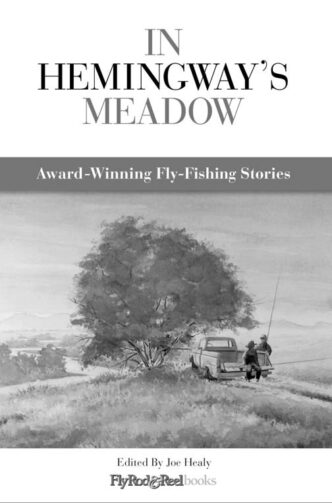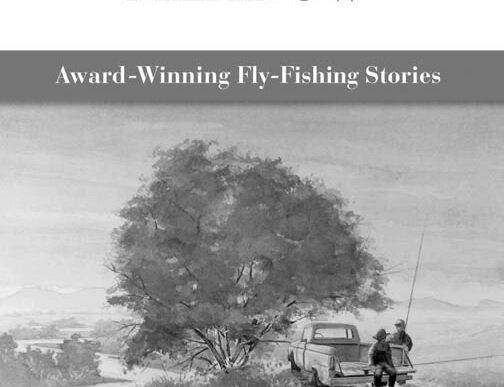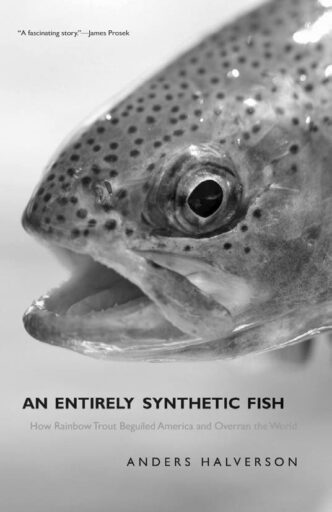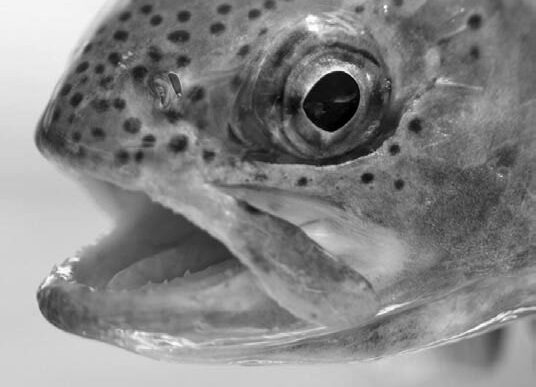To Read

BEARTOOTH: A NOVEL
By Callan Wink
$28, Spiegel & Grau
2025
Reviewed by Sean Stiny
ANTLERS AND GALLBLADDERS
We meet Thad and Hazen as they’re butchering a young sow out of season—their third black bear of the trip. Hazen is elbow-deep in guts feeling for the gallbladder in these first pages. Villains possibly, poachers to be sure, bastards through and through.
They turn the gallon Ziploc of gallbladders over to a feller named the Scot for an envelope of cash in a clearing free of timber and surveying eyes. The Scot, it turns out, is the real bastard, the real villain with real murder in his eyes.
Callan Wink, Montana river guide, California wave surfer, first-rate raconteur, returns with his second novel of character study and adventure in the American West. In Beartooth, Wink writes of brothers Thad and Hazen hunting and hiking, brawling and logging. And, with his guide’s eye, he writes of the brothers fly fishing:
“Thad has watched brown trout in the summer come for his dry fly slowly, mouths agape, only to turn at the last second and spook because something didn’t look right. A suspicious fish, a brown trout.”
Thad, older and solemn. Hazen, a year younger and happy as a well-fed dog. Dim and excitable as a dog too. After their father dies, the two unschooled young men must keep the homestead in shape. And the bill collectors at bay.
Leaky roof, old truck, land to tend, groceries to unbag, gas for the Stihl and the Ford, the power company, past property taxes, burgers and beers after felling, sawing, and delivering lodgepole. And their father’s hospital bills to boot. That’s where the gallbladders come in, to relieve some of the bills and debt they’d signed onto after their father’s passing. Their villain role starts to soften the more we see behind their snag.
That’s when the Scot offers them a monetary reprieve they can’t pass up. Head into the Yellowstone backcountry and retrieve a bounty of elk sheds for some highfalutin chandeliers. A few grand for a couple days work, but high risk. They already know of a valley where the antlers are piled, untouched in the park because of taut federal regulations.
Hazen is aboard the plan instantly. Thad sees the peril instantly—the threat of a federal jail sentence, but more so, the Scot’s wrath. He turns to Hazen, who is already counting the money not in hand: “I get you out of trouble you don’t even know you’re in. I’ve been doing it my whole life.”
Eventually Thad caves and puts the plan into motion. The tension builds, their fates are foreshadowed, but Wink never overlooks the astounding Yellowstone backdrop of their harebrained scheme.
“Thad grabbed a handful of his ugly creations from the fly-fishing desk and went out to fish for a couple hours behind the house. The cottonwoods were a riot of gold, and the peaks had a new dusting of snow, and as he strung up his rod, an elk cut loose a shrill bugle from somewhere across the river.”
Nearing the novel’s finale, the Scot has them over a barrel. He knows they need the antler money, but he’s also in a shrewd position to swoop up their land if they get caught poaching, something Thad begins to realize.
Wink’s inherent strength is in his descriptions of trout and the timber and the ridgelines. I never doubted the landscape he depicts because that’s indeed his own Montana landscape, whether on foot or in a drift boat.
“He could just make out the dark streamlined shapes of several nice trout finning in a slow eddy formed behind a large midstream boulder. They were stacked together almost as if in formation, brown trout probably, staging before the spawn, a period of time in which the males took on brilliant orange and gold colors and grew more aggressive than usual.”
Beartooth kept me riveted by the brothers and captivated by the land and the streams, even when Wink’s story takes a few abrupt turns. It’s a great gravel bar read if you’re in-country. And a great way to tighten the days until your next fly-fishing expedition if not.
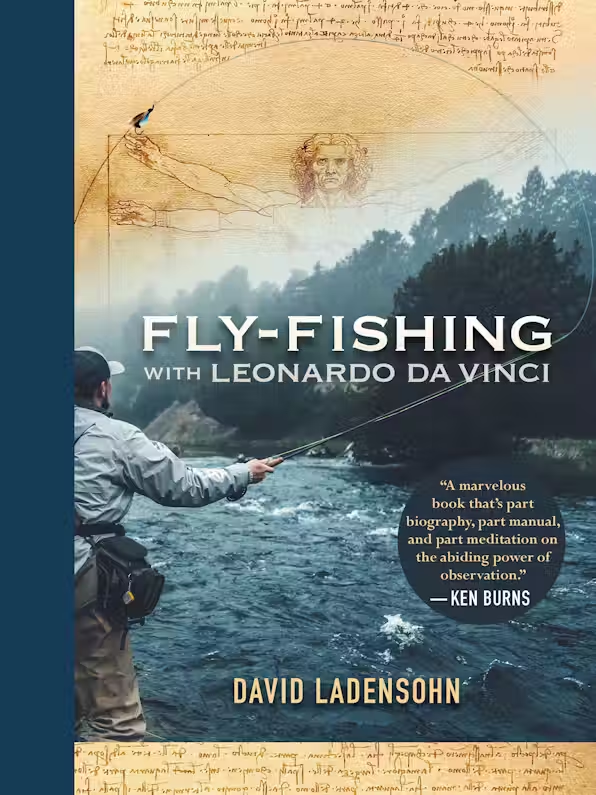
FLY-FISHING WITH LEONARDO DA VINCI
By David Ladensohn
$27.95, Terra Firma
2024
Reviewed by Sean Stiny
THE VITRUVIAN FLY-FISHER MAN
Consider Leonardo da Vinci’s Vitruvian Man. With a fly rod above his head and a dry fly on the end of his line. The Vitruvian Fly-Fisher Man.
Da Vinci, obsessed with water and angles, might’ve been a fantastic angler, as long as he could calm his mind long enough to float an elk hair caddis in the afternoon sun and wait for a brown to slurp it down.
Without question though, Leonardo would’ve been a fantastic river guide. David Ladensohn goes as far to say, “fishing with a great guide adds an entire dimension to the experience. Leonardo would have been the best of them all.”
Ladensohn parses the parallels between da Vinci and mending the line in Fly-Fishing with Leonardo da Vinci. He traces da Vinci’s upbringing as a bastard child in the town of Vinci, to his apprenticeship in Verrocchio’s workshop, to his rise to fame (but little fortune) as a painter of The Baptism of Christ and The Last Supper. His Mona Lisa spanned thirty years of tinkering at the easel and ended up in France at the behest of the French crown, where it still hangs.
Much of these details we know from many volumes of books (including the massively popular da Vinci Code ones) and documentaries (the fantastic new Ken Burns one) and films (the silly da Vinci Code ones).
But Ladensohn does a superb job of veering in different directions to those most familiar. He points to one detail in The Baptism of Christ that flummoxed patrons at the time and shows da Vinci’s supreme skill for detail. In the painting, Jesus’ feet are in water and are refracted. Just as we see our wading boots or a faraway brook trout at an obtuse angle, Leonardo captures this detail that was evident to the eye but absent in any paintings until his.
Fly fishing is in the details, in the unseen. A boulder here, an eddy behind. A riffle there, a pool following. Da Vinci was meticulous with details, as is well known, particularly with currents and waterways. Why does the deeper water flow slower than the surface water? Why is the left bank more eroded than the right? How does a single object, like a boulder, affect the current in a multitude of ways?
“As soon as an angler ties on a nymph or wet fly or streamer, she sacrifices the leading way to know that a fish took the bait… Now she is fishing in her mind’s eye. No one had a sharper mind’s eye than Leonardo.”
Ladensohn details some of his own fishing expeditions including the pursuit of a bull rainbow in the Rio Grande. The ‘bow was well hooked, but the author and his guide were led from boulder to gravel bar to chest deep in the riffles before the line went slack and Nick, his guide, raised the net to reveal the trout, bent into a u-shape.
On research expeditions, the logistics of how Ladensohn came to view a handful of da Vinci originals in the Royal Collection at Windsor Castle is nearly as page-turning as the fishing. Seeking his way into the Print Room at the castle is as exhausting as the myriad of flights and washboard roads it takes to get to a blue-ribbon trout stream in Patagonia.
Was Leonardo a fly-fisherman? Likely not, Ladensohn concludes, but it’s certainly possible that he waved a stick above his head while inspecting a riverway with thoughts on how to land a lunker, and where that lunker would lurk in those pools. That is to say, Leonardo would’ve made an excellent guide. Ladensohn acknowledges:
“As to that initial question of whether Leonardo could have been a fly-fisher or even an angler… he could have been, but even I admit there is not a single historical hint that he was. Rather, it is Leonardo’s potential to guide us to fish in the currents, to teach us to observe in new ways, and to appreciate every element of fishing that I know is real.”
Even a cursory understanding of da Vinci’s hydrology theories is a field guide that even the wisest and wiliest anglers can heed. As Ladensohn asserts, “I wish I could fish with Leonardo da Vinci as my guide.”
Though you’ll never get da Vinci into a drift boat, Ladensohn’s book is solid footing for tightening a line with Leonardo as your guide.
To Watch
In this first episode of their new podcast series, Fly Fishing Pioneers & Legends of the Northwest, Wild Steelhead Coalition Board Chair Ed Sozinho sits down with writer and historian Jack Berryman to discuss the history and pioneers of steelhead fishing and the role anglers have played in preserving and restoring wild steelhead along the Pacific Coast.
– The Editors









